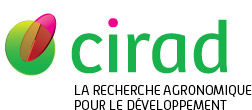Ollivier Laurence, Bonneau Xavier. 2004. Report on the mission to Timor Leste (East Timor), 8-17 December 2003 : Aspidiotus destructor outbreaks on Cocos nucifera in Baucau district. Montpellier : CIRAD-CP, 44 p. N° de rapport : CP_SIC 1718
|
Version publiée
- Anglais
Utilisation soumise à autorisation de l'auteur ou du Cirad. ID521186.pdf Télécharger (14MB) | Prévisualisation |
Résumé : During our March 2002 mission funded by the French Ministry of Foreign Affairs, we have: 1) Identified the pest responsible for coconut decay in Baucau: the scale insect Aspidiotus destructor. 2) Proposed a biological control method consisting in importing a species of predatory ladybird, to rear it locally in Baucau and release it in infested coconut plantations. In July 2003, after CIRAD contacts with the Indonesian University of Gadjah Mada in Yogyakarta (Dr. Andi Trisyono), two Timorese representatives from MAFF took a course at the entomology faculty of that university. They selected a local species of ladybird, Chilocorus politus, known for its effectiveness against A. destructor, and were trained in rearing techniques. In September 2003, 46 C. politus adults were imported from Yogyakarta to Timor-Leste, 38 of which arrived in good condition at the Triloka laboratory near Baucau. Our December 2003 mission, commissioned by the Timorese MAFF and funded by USAID / DAI in Dili, consisted in: 1) Checking that the Triloka laboratory complied with rearing standards. 2) Preparing ladybird releases. 3) Assessing the degree of damage caused by the pest in Baucau and checking for its possible presence in two coconut growing zones: Viqueque and Com. Regarding point 1), advice is given for: - Improving the building layout to create a stable microclimate appropriate for ladybird development. - Improving the production of A. destructor rearing media (pumpkins). - Organizing the different stages of C. politus rearing to avoid mixing the successive larval instars and generations. Regarding point 2), 8 release sites were chosen in Baucau, along with 4 control sites without releases. At each site made up of 10 coconut palms, pest population trends will be regularly monitored. Depending on ladybird production levels at the Triloka laboratory, the first releases are scheduled for April 2004, at the beginning of the dry season. Regarding point 3), we noted the considerable spread of the pest, and of palm deaths in and around the town of Baucau between March 2002 and December 2003. We also identified some A. destructor foci in Viqueque district, but no outbreaks for the moment. Lastly, we identified some A. destructor foci in the coastal villages between Baucau and Com. At the port of Com, a local species of ladybird, Pullus sp., was identified that is apparently a predator of A. destructor. Its efficacy should be tested at Triloka.
Auteurs et affiliations
-
Ollivier Laurence, CIRAD-CP-COCOTIER (FRA)
 ORCID: 0000-0003-4838-8318
ORCID: 0000-0003-4838-8318
- Bonneau Xavier, CIRAD-CP-COCOTIER (FRA)
Autres liens de la publication
Source : Cirad - Agritrop (https://agritrop.cirad.fr/521186/)
[ Page générée et mise en cache le 2024-04-01 ]




